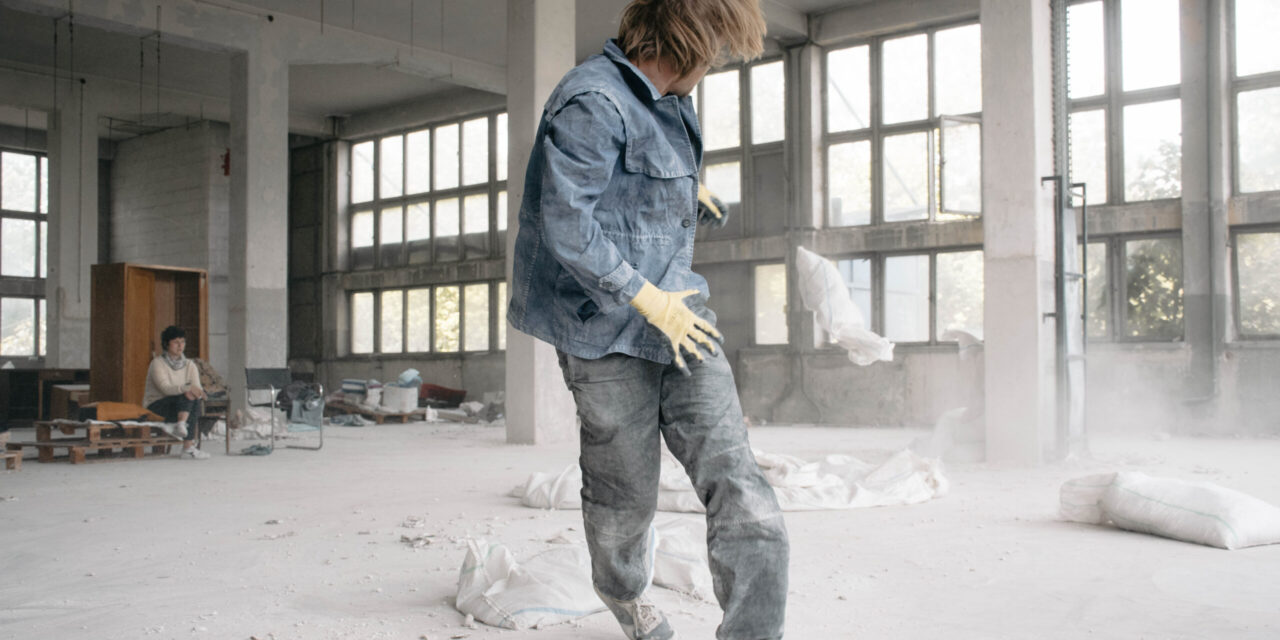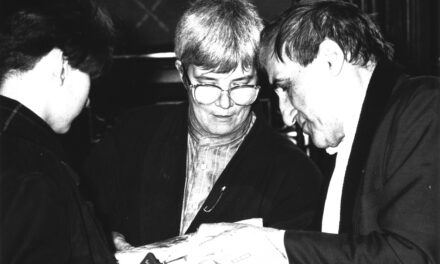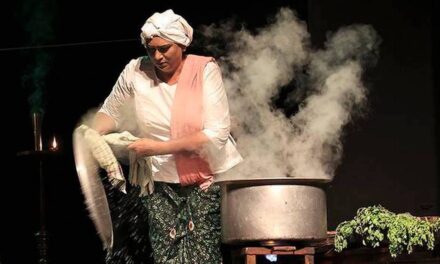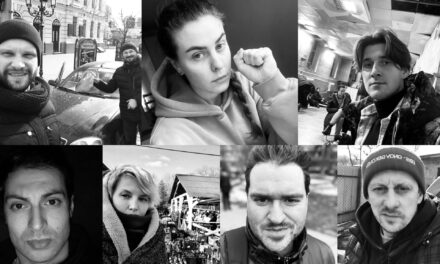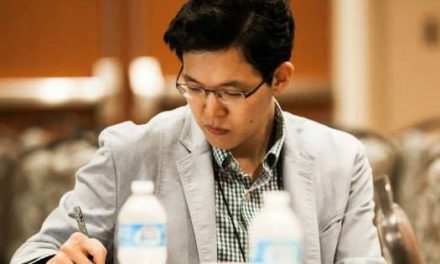The dance performance Arbeit by Šimun Stankov, Una Štalcar-Furač and Espi Tomičić takes inspiration from construction work and demystifies artwork as something particular, approaching it as real work. We speak to the authors of the performance about their creative process, the possible relation between theatre and physical work and where the performance can be seen (note – not at theatres).
What is the concept of your performance, what is the idea behind it and what theatrical acts do you use to convey the given point?
Espi Tomičić: The concept of the performance is to borrow the real experience of working at a construction site into Šimun’s primary profession, that of a dance artist. The starting research point was his experience, and later we all brought into the process our experiences of precarious work and the impossibility of earning money from artistic work. We then took from that experience and searched for dance material. In the background of the work operates the idea of artistic work as an equal work, and we emphasize this with the physical exhaustion of the dancer, exhaustion of materials, durability, duration, treatment of building material as performance material and the body as a working body. In addition, it was important to us to focus on the process itself, which is very little valued nowadays, everything is done in a month and must be justified through EU projects. We didn’t play baustelle on stage, we took some work settings that are measurable in some physical form, but we undid it on stage, we build to tear down because the performance takes place in the process itself and construction is what makes up dance material, not the final product.
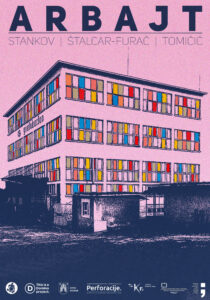
Poster for the performance of “Arbeit”; design: Filip Pilj
Your performance is never performed at theaters or cultural institutions, but always at abandoned factories or construction ruins. What is the role of this kind of space in your performance?
Šimun Stankov: The space in this performance gives reality, it was clear to me from the very beginning that the space must be real, not imaginary or built on a theatrical stage. This is how we turned an unconventional space into a theatrical convention, an audience that sits in relation to the performer who works. The space itself speaks and gives a natural scenography, it has its own story and history, especially ruins that used to be something, that represented something. With this play, we inscribe a new life into the space, but we are also reminded that after the performance, unfortunately, it will continue to be a rotten ruin that became a stage or a meeting place only for a moment. There’s something very poetic in that.
Šimun, you mentioned in one of earlier interviews that the idea for the performance came to you during your work at the construction site during the lockdown in the first wave of the pandemic and after the devastating earthquake in Croatia. Can you compare work in theater and construction from your personal experience, and why did those two experiences inspire you to create a performance?
Šimun: I’m not sure if I can compare work in theater and construction since they are completely different worlds. I see theatre more as a figurative construction site, a world that has yet to be built, a world you have yet to settle in, invent a language and vocabulary with which you communicate to the audience.
The days spent on rooftops and ruined attics inspired me because of the ambiance, the dust, the old planks, the bags full of rubble we brought down from the attic by hand, and the piles of bricks from the collapsed chimneys. Somehow it was surreal, very poetic and emotional for me at the same time, considering that the city center was badly damaged. Theatre spaces don’t have such a reality, so I chose the punk variant and squatted with the author team at the space for rehearsals and performances for 4 months. The second part of inspiration comes from working with objects and physical effort as well as the inner need to challenge me choreographically and performatively, to convert the old factory space into a ready-made theatre, so the audience can imagine that space as a potential theatre with us… At least for a moment.
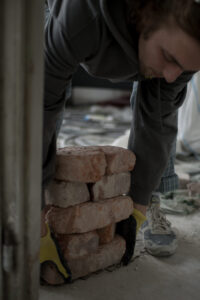
“Arbeit”; photographer: Karla Kocić
Through the dance language of the performance, you talk about important topics such as the romanticization of artistic work or derogation of the artistic versus other professions. However, is it fair to fully equate it with construction/physical work? It seems that artists, no matter how undervalued in society, still have certain privileges over manual workers.
Una Štalcar Furač: I wouldn’t say that in Arbeit we equate construction work with artistic work or profession. I think that for Arbeit, the starting point for work was Šimun’s experience at the construction site, but we completely redirected that experience through the process of working on the performance to the issue of working exclusively in the field of art. Working on the construction site inspired us to build and create dance material, to choose props as well as to choose the performance space, but we talked from the beginning that our intention was not to copy the construction site or in any way show the actor performing construction work.
Why did you choose the German noun for “work” as the title of the performance? For me, “Arbeit” evokes associations to the practice of Gastarbeiter, a member of the working class from the post-Yugoslav area who goes to Germany to perform mostly hard physical work in order to earn more money for themself or their family. Did the same association come to your mind?
Šimun: For me, It’s interesting how the title was created before the performance, because when applying for co-financing the project you have to invent the title right at the beginning. Arbeit was the ideal title, simple, literal and resonant, and I believe that the title gave us the focus for the process of the whole performance, we knew we had to create a hard, dusty and physically demanding performance.
As for the Gastarbeiter, that happens to artists from the Balkans even today, young people mostly go to Germany, Belgium or the Netherlands for art studies or earn the daily bread, to find new opportunities, auditions, colleges, meet new people, potential dance companies, explore new practices, hybrid forms, etc. Unfortunately, this is not the case in the ex-Yu region, specifically, the cultural sector is not adequately funded to provide artists with a dignified life, not to mention the lack of infrastructure that can support so many different artists, independent cultural workers, provide them with space and time for research or a presentation of the art they create. So we had that association of work as a Gastarbeiter, and after all, it would be a great trick to go work with Arbeit to Germany.
Espi, so far you had experience as a dramaturg and playwright in dramatic theater, and you had artistic education in that field. How did you manage to work on the dance performance and did the experience from dramatic theater help you?
Espi: Actually, not really 🙂 I’m studying performance dramaturgy that is directed towards working on projects like this one, but I’ve never done anything related to it outside of college projects, I’ve always had a fear of theory and/or dance projects. It was a fear of the unknown or what seemed foreign to me. From an early age, they teach us to think through dramatic narratives and this was a step I needed in artistic and personal development. This is my first professional dance project. I remember when Šime called me that I told him I didn’t know how I was going to do it, but in the process, which lasted several months, I realized it was just some fear that I nurtured for years, fear of ignorance, misunderstanding, reflection… I was lucky to start working with them outside the dramatic domain because I had the freedom and space to express everything I was thinking about, and they taught me a lot. The experience of writing plays and working in dramatic theatre has been useful to me to the extent that I know what I am moving away from because this is, for me, a completely different way of thinking about performance, process and theatre in general. I fell in love with this process!
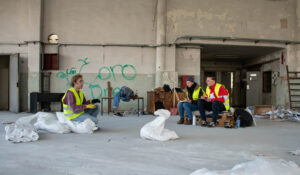
Photo: Karla Kocić
Una, can you tell us a bit more about how your joint creative process went and compare it with your experience of working on other dance performances in Croatia?
Una: The process of working on Arbeit was different from other processes I have participated in or am currently involved in. I often work on the city streets, but the space of Grafokarton or generally abandoned places still provides a different atmosphere for work. Such spaces carry with themselves a lot of question marks, insecurities and I would say mysteries — they don’t provide as much a sense of security as when you work on the street among people, and especially as when you work in a theatre. We started working in the space of AKC Medika, which is also a dilapidated space that has been maintained in some way. There, in addition to coldness, we also struggled with fundamental questions of what Arbeit will be like, what kind of dance material will be good for issues we want to deal with. At Medika, we realized that we were on “slippery ground,” that we didn’t want to show work at a construction site in the form of a dance performance; there we opened the doors of the process, and we later used those entrances at the original Grafokarton space. After arriving at Grafokarton we spent time adjusting to the space – what part of the space we will use, whether we should clean the whole space or leave it as it was, where the audience will sit, how Šimun intervenes in the space… We had a lot to think about space, it took us a long time to relax in it. As time went on, parts of the performance got their place in that huge space. The process was time-consuming and I think it took all that time to fit this specific performance into such a specific space.
Karla, your role as a photographer in the creation of this performance was special because you not only photographed the performance but also recorded the creative process itself. Can you tell us more about that?
Karla Kocić: Lately, I often work with the Škvadra, a group of young dance artists. It was hard for me to understand how the final performance comes about in general and what the creative process is like. Šimun, Una and Espi allowed me to be present in such a process and observe it from the outside – with a camera. I recorded their thoughts, obstacles they encountered, doubts, successes and even those difficult and quiet days. My doubt in the filming of this long process was “how to record it interestingly?” But after reviewing the material, I realized that the gradation is very visible and that the material is humorous and special in its way. I think it was a good idea to record such a process and show it to people who want to get to know it. I look forward to showing how my eye has seen that brickwork of Arbeit.
What are the further plans for the performance? Where can you view it?
Šimun: At the end of December, we will make an Arbeit installation at a group exhibition at a gallery in the center of Zagreb. And as for the show itself, the goal is to try to play it abroad this season and find new interesting spaces in Zagreb and the rest of Croatia. By the end of this year, our DIY Arbeit documentary should be released, which will be publicly available on the internet, and we are preparing for the second, new part of the show.
This post was written by the author in their personal capacity.The opinions expressed in this article are the author’s own and do not reflect the view of The Theatre Times, their staff or collaborators.
This post was written by Borisav Matić.
The views expressed here belong to the author and do not necessarily reflect our views and opinions.

